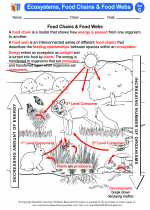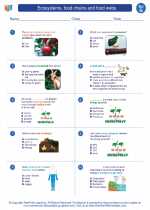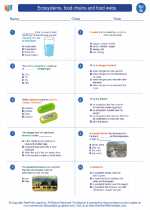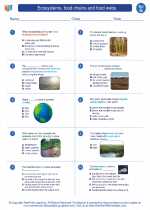Mushrooms
Mushrooms are a type of fungus that belongs to the kingdom Fungi. They are known for their fleshy, spore-bearing fruiting bodies that typically grow above ground or on the surface of their substrate. Mushrooms come in a variety of shapes, sizes, and colors, and they play important ecological roles as decomposers in the environment.
Anatomy of a Mushroom
A typical mushroom consists of several parts, including:
- Cap: The cap is the rounded, umbrella-shaped top part of the mushroom. It is the reproductive structure that houses the spores.
- Stem: The stem is the stalk that supports the cap and connects it to the mycelium below the surface.
- Gills: Located on the underside of the cap, gills are thin, radiating structures that bear the spores.
- Veil: Some mushrooms have a veil, a thin membrane that covers and protects the gills when the mushroom is young.
- Mycelium: The mycelium is the vegetative part of the fungus, consisting of a network of thread-like hyphae that grow within the substrate (soil, wood, etc.).
Ecological Importance
Mushrooms play a crucial role in the environment as decomposers. They break down organic matter, such as dead plants and animals, and recycle nutrients back into the ecosystem. Additionally, some mushrooms form symbiotic relationships with trees and other plants, providing them with essential nutrients in exchange for sugars produced through photosynthesis.
Edible and Poisonous Mushrooms
While many mushrooms are safe and delicious to eat, some are toxic and can cause serious illness or even be lethal if ingested. It is important to have a good understanding of mushroom identification and to only consume mushrooms that have been positively identified as safe for consumption.
Study Guide
Here are some key points to remember when studying mushrooms:
- Describe the anatomy of a typical mushroom, including the cap, stem, gills, veil, and mycelium.
- Explain the ecological importance of mushrooms as decomposers in the environment.
- Discuss the potential dangers of consuming unknown or poisonous mushrooms.
- Identify at least three edible mushroom varieties and describe their distinct characteristics.
- Research the cultural and culinary significance of mushrooms in different societies around the world.
By understanding the anatomy, ecological role, and potential risks associated with mushrooms, you can develop a comprehensive appreciation for these fascinating organisms.
.◂Science Worksheets and Study Guides Seventh Grade. Ecosystems, food chains and food webs

 Activity Lesson
Activity Lesson
 Worksheet/Answer key
Worksheet/Answer key
 Worksheet/Answer key
Worksheet/Answer key
 Worksheet/Answer key
Worksheet/Answer key
 Vocabulary/Answer key
Vocabulary/Answer key
 Vocabulary/Answer key
Vocabulary/Answer key
 Vocabulary/Answer key
Vocabulary/Answer key
 Vocabulary/Answer key
Vocabulary/Answer key
 Vocabulary/Answer key
Vocabulary/Answer key
